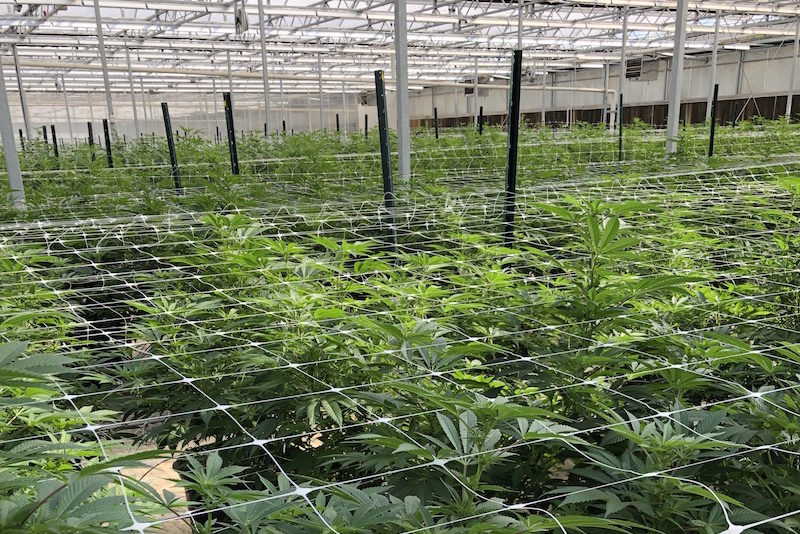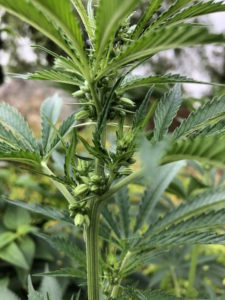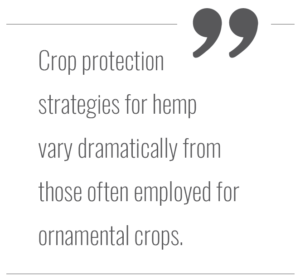
Hemp Production Basics
CBD hemp production presents an exciting and potentially profitable way for ornamental growers to diversify. As with any emerging market, the market can be quite volatile. Early adopters may realize great success but also may encounter failure due to factors beyond their control. While overall market conditions cannot be controlled, we can help growers understand the production requirements to produce a healthy crop.
Let’s look at some of the most common questions that come our way from ornamental growers.
Genetics
What are the best CBD varieties to grow?
Your first exposure to hemp genetics might leave your head spinning due to all the new terms: feminization, COA, total THC, delta-9, fiber, CBD, CBG and more. And, the many different varieties, aka strains, can be overwhelming. Instead of focusing on the names, pay attention to the important qualities behind the names.
Along the way, keep in mind that hemp breeding is still in the early stages and most strains currently available are the result of very limited breeding. For the most part, these are not hybrid F1s developed from years of inbred parent selection and management. It’s a different world compared to petunias and geraniums.

Regardless of the product form (seeds, seedlings or liners/clones), focus on the phytochemicals. Be sure to choose CBD-rich varieties; avoid those bred for fiber or seed oil. Most processors will want at least 6% CBD in the biomass.
All suppliers should be providing a Certificate of Analysis (COA). COAs are the result of independent lab testing and give a snapshot of the cannabinoid profile, including CBD and THC. As of this writing, it looks like the U.S. Department of Agriculture (USDA) will be defining hemp as cannabis with less than 0.3% total THC. Choose varieties that will achieve this while still producing a high enough percent of CBD to be profitable.
Remember that as CBD goes up, THC follows in a linear relationship. Pay attention to the ratio of CBD:THC on the COA. This ratio will vary by strain but will remain constant for specific genetics. You can do the math and understand how much CBD potential the strain has at 0.3% total THC. For example, a strain with a ratio of 24:1 has the potential to produce 7.2% CBD at 0.3% THC. Be cautious about focusing on genetics that promise a high percent CBD, especially for CBD rates of 16% or higher. The CBD percent will be irrelevant if the crop goes over 0.3% total THC. Study the ratio!
When purchasing seeds, get documentation regarding feminization rate. This is the percent of female seeds, and it should be at least 99%. If buying seedlings, ask to see documentation for the feminization rate for the seeds used. If buying vegetatively propagated clones/liners, ask about how the mother stock was maintained and if it was generated from a clean stock program.
Some strains will perform in a wide range of climates, others will do best under certain conditions. Some will do fine in a greenhouse, others might not. Ask your supplier or breeder for regional performance data regarding greenhouse suitability, disease tolerance, insect tolerance, greenhouse production, plant form, frost tolerance and yield.
Infrastructure Needs
Can I use my existing greenhouse to grow hemp? Necessary infrastructure changes depend on the genetics being grown, the time of the year and the target product. Lighting is a primary concern. While autoflowering crops will flower under any photoperiod, most genetics are strongly photoperiodic, short-day plants. Critical photoperiod varies by variety, but generally falls in the 13- to 14-hour range. Therefore, young plants require long days to remain vegetative. Night interruption or daylength extension work equally well. Year-round flower or seed production will require supplemental lighting and light deprivation (black cloth) systems to maintain short day conditions. Seasonal production needs will depend on the specific time of year.
A few other infrastructure needs should be considered. Summer greenhouse production will require active cooling for most locations across the U.S. If growing to flower or for seed, greenhouse height needs to be adequate to support lights and light deprivation systems over crops that can grow 4 to 6 feet tall. This isn’t a crop for a low-gutter space!
Benching used for producing bedding plant flats might work well for liners but will make working with mature plants a challenging endeavor. Seed and flower crops are best produced using drip irrigation. For summer production, insect netting should be considered a necessity. All hemp crops require strong sanitation: Floors and benching should be tolerant of chemical cleaners and sanitizers. Concrete floors are desirable, as dirt and gravel floors can harbor insect pests.
Crop Protection
What are the common pests and diseases of hemp and how to control them? Most greenhouse hemp pests are well known to commercial flower growers: thrips, spider mites, aphids, powdery mildew and Botrytis top the list. However, there are a few others, including hemp russet mites and root aphids, that will be new to most growers. Growers should spend some time learning about these two pests.
Crop protection strategies for hemp vary dramatically from those often employed for ornamental crops. First, no PGRs are currently allowed for hemp crops. Second, CBD hemp should be treated as an edible crop. This means your chemical toolbox is much smaller than for ornamental crops. Additionally, while a small number of pesticides are labeled for “industrial hemp,” this does not mean they can be used on CBD hemp. To apply a product on CBD hemp, “hemp” must appear on the label as a crop. Finally, individual states often have specific rules regarding pesticide use on hemp. Growers must take the time to learn the requirements in their states. One thing holds true across all states: Prevention is key. Coming from behind on any crop is challenging. On hemp, coming from behind can be a losing battle.
 Cannabis growers in most states are familiar with state-mandated testing for pesticide residuals, microbial infestation and heavy metals contamination. We should expect that these requirements will come to CBD hemp, too. Start getting ready now by learning to prevent and control pests before the flower stage as most growers will want to avoid spraying late in the crop. Non-chemical control of insect and mite pests is achievable with use of biological control agents (BCAs). The key is deploying the BCAs from the very start of production.
Cannabis growers in most states are familiar with state-mandated testing for pesticide residuals, microbial infestation and heavy metals contamination. We should expect that these requirements will come to CBD hemp, too. Start getting ready now by learning to prevent and control pests before the flower stage as most growers will want to avoid spraying late in the crop. Non-chemical control of insect and mite pests is achievable with use of biological control agents (BCAs). The key is deploying the BCAs from the very start of production.
Crop Fertility
What does this crop need? Hemp is a moderate feeder, and a balanced program will generally prove successful. Most growers will use a two-part system to provide adequate calcium to the crop. Fertility rates of 150 to 200 ppm are common once the crop moves past the young plant stage. It’s important to provide a proper micronutrient package and avoid nutritional stress, as low fertility is reported to lead to higher total THC levels. Traditional horticultural water-soluble fertilizers are easily adaptable to hemp crops. Several companies, including JR Peters and Master Plant-Prod have developed hemp specific programs. Sustane also has programs developed for those wanting to focus on organic hemp production.
Sanitation
What special actions do I need to take for sanitation? Sanitation is important for both human and crop health, and should be more stringent than is typical for ornamental production. For greenhouse spaces, plan full sanitation of the benches and floors between crops. Control biofilm in irrigation lines between crops, too. To avoid pathogen spread, require use of gloves and aprons, ensure that tools are properly sanitized and make sure staff does not move from a problem area into a clean area. Actively scout for crop problems, limit outside shoes and limit outside guests. All inbound plant material should be quarantined and mother stock, if present, should be isolated and put under the most restrictive sanitation practices you can manage.
CBD hemp isn’t a complicated crop. It’s a vigorous grower and most commercial flower growers have the skills necessary to grow the crop. By addressing a few infrastructure needs, planning the production strategy and stepping up sanitation practices, growers can be successful in most types of structures.









